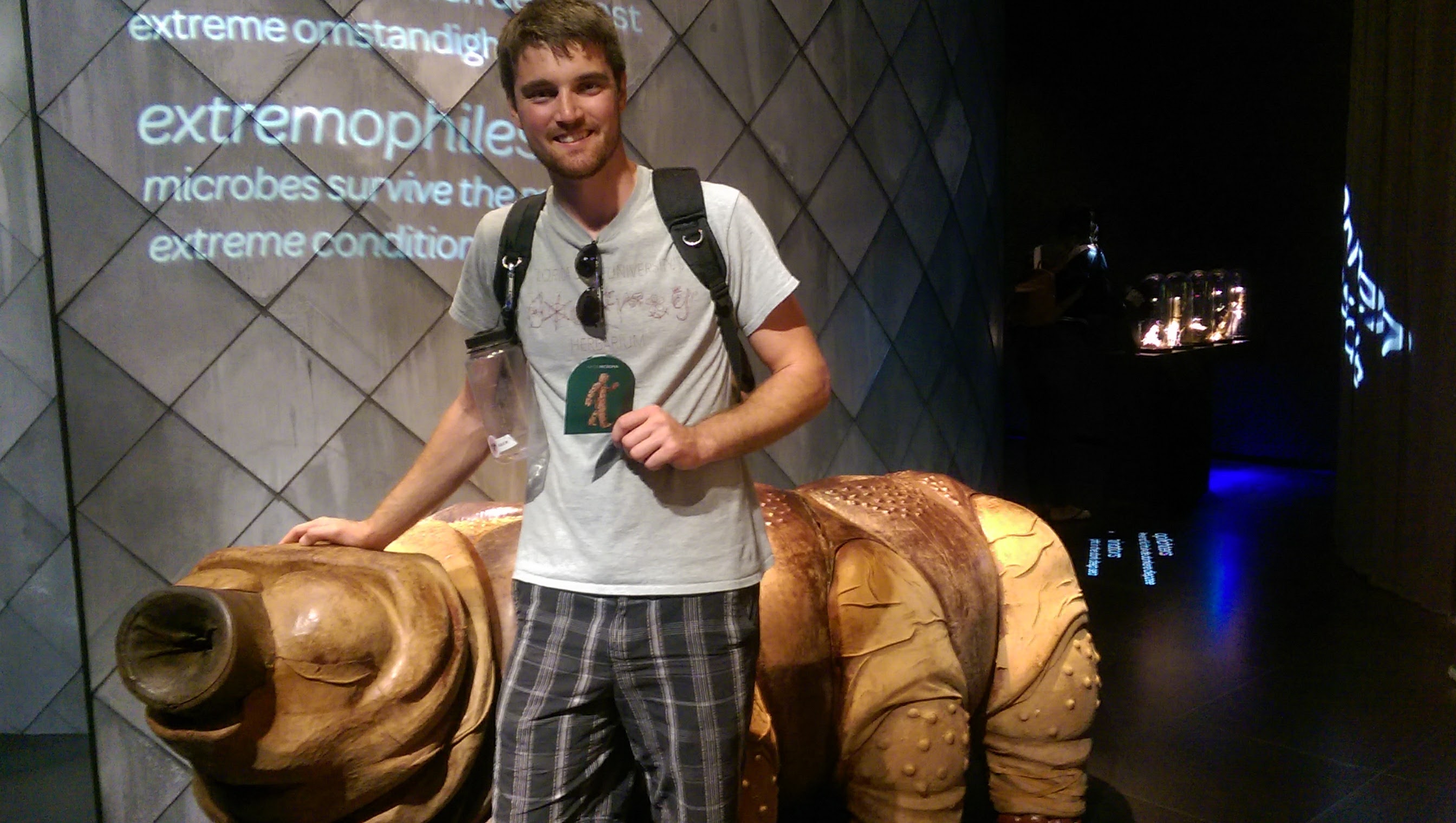Brendan Scherer

I joined the Mast lab in the fall of 2015, a year and a half after graduating with a BS in botany from the University of Wisconsin, Madison. In the years between undergrad and grad school I worked as a field technician on a hops farm and as a high school math and science tutor.
BS Botany University of Wisconsin-Madison. May 2013
bscherer@bio.fsu.edu
(920)-268-8041
King Life Science Building: Office 4084
Department of Biological Science 319 Stadium Drive
Florida State University, Tallahassee, FL 32306-4295
My research has two primary directions. The first uses 16s rRNA sequencing to describe endophytic bacterial diversity in mangrove trees, especially Rhizophora mangle. The second direction uses RADseq methods to investigate the ongoing range expansion of R. mangle into the Florida Panhandle and aims to determine the relative importance of long and short-distance dispersal.
My microbial ecology research is composed of three complementary projects.
1) A descriptive chapter which seeks to describe endophytic bacterial diversity across tissue type and geographic location within R. mangle.
2) A project investigating endophytic diversity within the propagules of R. mangle across geographic and genetic distance throughout Florida.
3) A project investigating endophytic diversity across three independent origins of mangrove habit. Mangrove habit has arisen as many as twenty times within the angiosperms, and three "mangrove families" are common in the American tropics. This project will use 16s rRNA sequencing to describe the bacterial communities on and within the propagules of three mangroves species and at least one terrestrial relative per family to determine whether ecologically similar (mangroves) or phylogentically similar (within each family) species possess more similar endophytic bacterial communities.
Pastore, A. I., and B. P. Scherer. 2016. Changes in community phylogenetic structure in a North American forest chronosequence. Ecosphere 7(12):e01592. 10.1002/ecs2.1592
Bates, George. Edited by Scherer, B.P. (2020) BSC 1005 Plants and People, Third Edition. MacMillan Learning Curriculum Solutions. Plymouth, MI.
Filmed and Edited a "Canopy Flight" video using drone technology at Tall Timbers Research Station.
Oral Presentation: “Phylogeography and Propagule Bacterial Diversity Across the Florida Range of Red Mangroves (Rhizophora mangle; Rhizophoraceae).” Botany 2019, Tucson, AZ. July 30th, 2019.
Workshop Leader: “16S Sequencing Mini-Workshop.” Florida State University. November 28th, 2018
Oral Presentation: “Vertical Transmission of Plant Microbiomes; Implications for Ecology, Evolution and Agriculture.” Green Group, Plant Sciences Seminar. Florida State University. April 12th, 2018
Poster: "Biogeography of the Macadamia nut family (Proteaceae)". Botany 2016, Savannah, GA. August 1st, 2016
Poster: "Variation in ethnobotanical knowledge based on age, sex, and distance from a tourist destination". UW - Madison Undergraduate Research Symposium. Madison, WI. April 18th, 2013..
Poster: "Variation in ethnobotanical knowledge based on age, sex, and distance from a tourist destination". Botany 2013, New Orleans, LA. July 28, 2013.
Graduate Student Instructor: General Biology for Non-Majors (Plants and People Section) BSC 1005. Summer 2017, 2018, 2019, 2020
TA: Field Botany (BSC 3143C) Fall 2015, 2016, 2018, 2019
TA: Experimental Biology Laboratory (BSC 3402L) Spring 2019
TA: Plants and Society (BSC 4933) Spring 2016, 2018, 2020
TA: Plant Biology Laboratory (BOT 3015L) Summer 2016, Spring 2017.
Robert. K Godfrey Herbarium Graduate Student Curator: Fall 2017
FSU Plant Club: Vice President 2016- Present